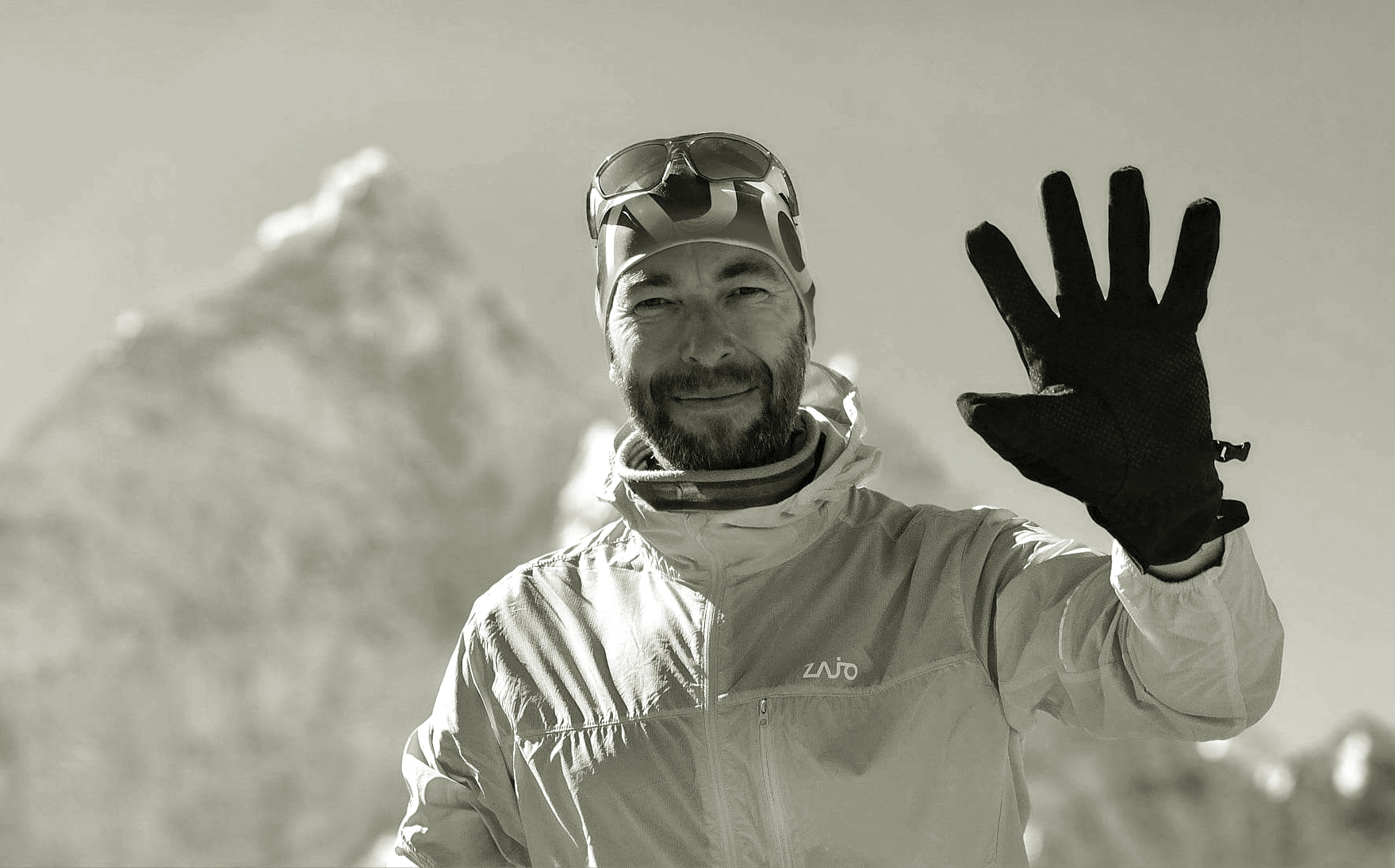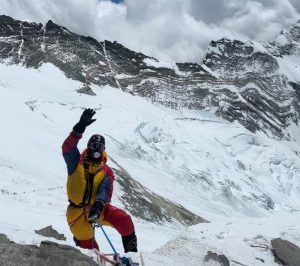"We love you and are waiting for you at home. Hold on, you are strong!"Continue reading

The rescuers searching for missing Hungarian climbers have returned to base camp with the dreaded news. Szilárd Suhajda has not been located, even though the three local sherpas have gone the extra-length to find him.
A message posted on Suhajda’s social media page informed that:
The rescue team could not find Szilárd Suhajda, the search has ended.
Despite the superhuman efforts of a search team of top Nepalese mountain guides, they have not found Szilárd Suhajda on Mount Everest. They searched for hours in the extended area of the Hillary Pass, where the climber was last seen alive. The Sherpas climbed up and down several times between 8750 meters and the 8848 meter summit, searching for Szilárd, but to no avail. Considering the time, weather and terrain conditions, there was no further chance of finding the climber alive, so the ground search was called off. The safe return of the Sherpas involved in the search is now the priority.
In the early evening of 25 May, the national back-up team was informed that another expedition had seen Szilárd at the bottom of the Hillary stairs at approximately 8780 meters in the morning hours. The Sherpa knew Szilárd personally from earlier, so there was no doubt that he had seen him. When they passed him, he was showing signs of life, but he had frostbite and signs of high mountain brain edema. The Sherpa guide was assisting his extremely weakened Chinese client down from the summit and was therefore unable to help Szilárd in any way, who was also some distance from the climbing route and therefore not connected to the fixed rope. Without a safety rope, his approach would have been life-threatening.

A photo from May 13 after a practice run. Facebook Márton Peter Price
In the light of this information, the back-up team immediately started to organize the rescue after assessing the situation, and in the evening hours agreed with the Nepalese agency providing Szilárd’s back-up at base camp to attempt to fly up by helicopter on the morning of the 26th to an altitude from which they could see Szilárd. At the same time, three sherpas will be sent to pick up Szilárd, who could optimally reach him in the late hours of 26 May.
As planned, a three-man team of Sherpas organized for the rescue, including Gelje Sherpa, the first to climb K2 in winter, set off on the morning of 26 May to reach Szilárd Suhajda. Renowned Italian mountaineer and helicopter pilot Simone Moro flew them from Kathmandu straight to Camp 2 and then set off on a reconnaissance flight to scan the south face of the mountain, ruling out the possibility that Szilárd had fallen in the process.
The three Sherpas departed Camp 2 at 6400m at 10:00am Nepal time on the 26th. They reached Camp 4 at 7950 meters in seven hours, an extremely fast time. For an average climber, this is three times the time for two days. Here a fourth Sherpa and a helper were waiting for them in a tent. One of them planned to join the searchers, the other was to provide the others with food and drink.
After a short rest, just two hours after their arrival, at 19:15 Nepalese time, the three-man team set off towards the Hillary stairs, with the fourth following later. They climbed all night, reaching the Hillary Stairs at the crack of dawn. However, they did not find Szilard Suhajda at the location, so they began a systematic search of the area. First they climbed to the top and then back to the Hillary stairs. The area around the Hillary stairs was thoroughly searched, all possible fall lines to the right and left of the road, on both the Nepalese and Tibetan sides, as far as they could descend from the fixed ropes.
The section below the stairs leading to the South Peak (8750 m) and its visible surroundings was then searched, without success. The searchers have then jointly decided, after consultation with the back-up team, to abandon the search. On 28 May, a final helicopter flight was made to search the side of the mountain above Camp 2.
After 16 previous unsuccessful Hungarian expeditions in 27 years, Szilárd Suhajda had a realistic goal to reach the highest point on Earth without the use of supplementary oxygen and the support of high-mountain porters. Climbing Everest without a tank is an outstanding achievement in the world. Over the past 45 years, since Reinhold Messner and Peter Habeler proved that the task was possible and survivable, outstanding Hungarian mountaineers such as László Várkonyi, Dávid Klein and the legendary Zsolt Erőss have attempted to reach the summit without oxygen tanks. According to statistics, less than 2% of successful ascents are made without an oxygen tank: an even smaller number is the small group of climbers who did not even use a sherpa.
Szilárd Suhajda was one of the most successful Hungarian expedition climbers. In 2014, he climbed the 8051-metre Broad Peak, in 2019 he was the first and still the only Hungarian to climb the 8611-meter K2, and in 2022 he climbed the 8516-meter Lhocé without the use of supplementary oxygen and the assistance of high-mountain porters. On Mount Everest, Szilárd Suhajda is the only Hungarian climber to have reached 8795 meters without the use of oxygen cylinders or sherpas.
It is almost exactly ten years that another legendary Hungarian climber, Zsolt Erős, had lost his life on another mountain, the Kangchenjunga. A movie called The snow Leopard Rises commemorates his life and achievements.
Featured Image: Facebook Szilárd Suhajda